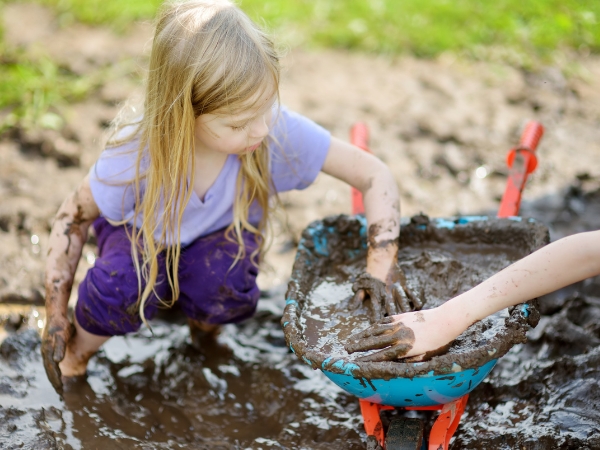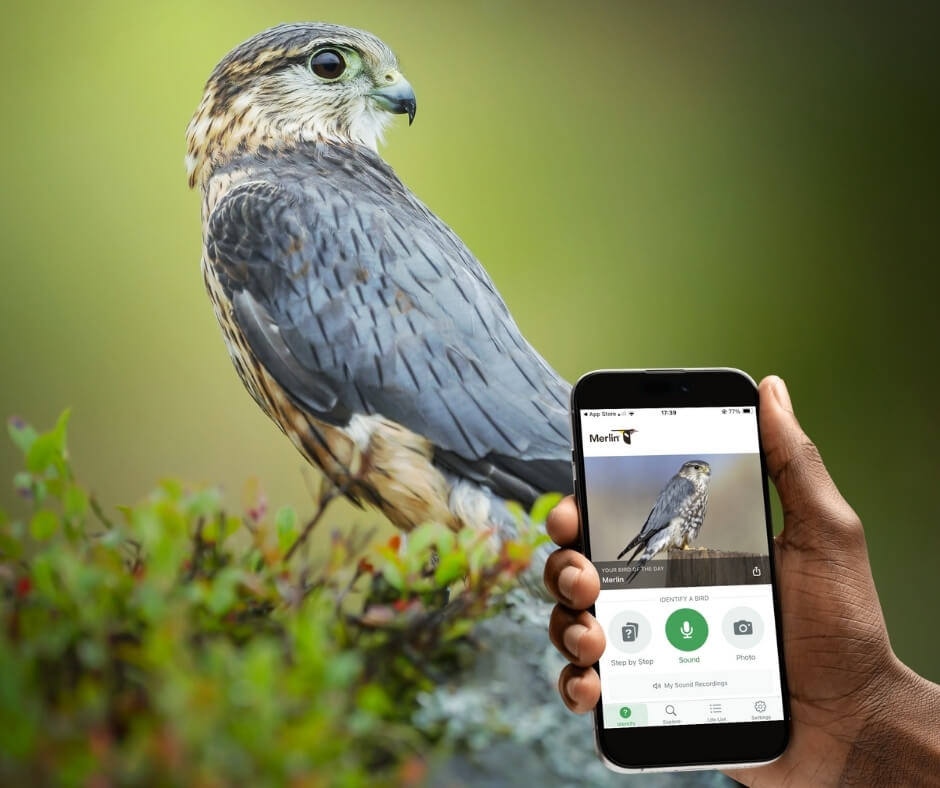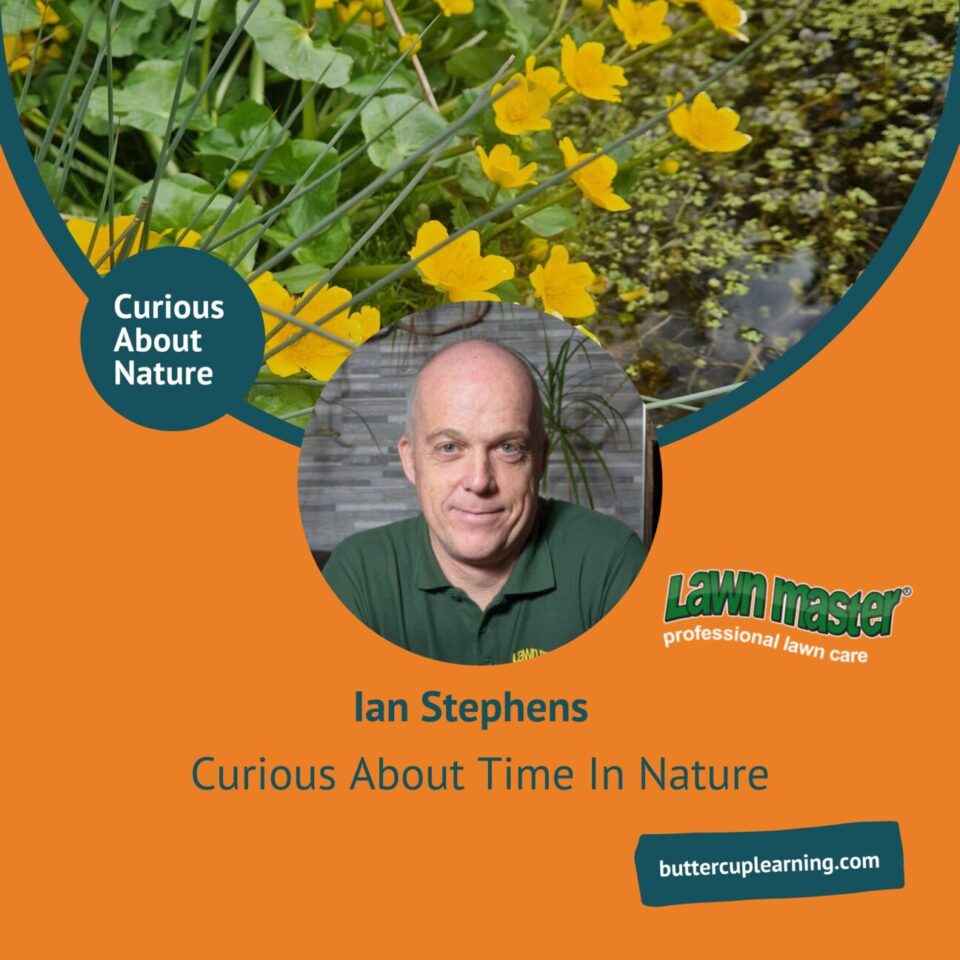Screen time can be a common source of conflict between parents and children and getting the right balance can be tricky, even with the best of intentions. However, technology doesn’t have to be the enemy – with a careful choice of apps, it can actually lead to more outdoor play!
Why is outdoor play so important?
Outdoor play is undoubtedly beneficial for children’s physical, emotional and social development, as well as increasing their understanding of the natural world. It can also help them to release pent-up energy and have a naturally calming effect.
Physical benefits can include an increase in:
- stamina
- strength
- immunity
- sensory awareness
Emotional and social benefits can include increased:
- self-esteem
- confidence
- resilience
- teamwork
- language development
- communication
- independence
- concentration
- decision making
- empathy
- sensory awareness

Is having screen time valuable for children?
Most children will grow up surrounded by technology, in some form or another. As parents, we can shield them to some extent and we can limit the time that they spend on devices, but they will need to learn computer skills, in order to become independent adults in today’s world.
It’s all about balance. If the internet is used as a tool, rather than as a distraction, it can be very beneficial. We can model this as parents, by using our phones or laptops to find out information, then stepping away, rather than drifting into scrolling on social media, as children learn from what they see and hear.

Top nature-based apps that encourage exploration
Well-chosen apps can encourage and support outdoor play and learning. Here is a selection of some I’d recommend:
BirdNET or Merlin – Record bird songs and identify species.
Seek by iNaturalist – ID plants/animals in your garden.
Star Walk Kids – Stargazing app made for young minds.
Geocaching – Digital treasure hunts in nature.
SkyView – Explore constellations and planets.

How to use nature-based apps with children aged 4-8
Start by introducing a weekly ‘Nature Mission.’ Talk about what we know and what we’ll need to find out. Ensure that screen time use is minimal and focused on the task.
Tip from Buttercup: Our box activities, such as our bird spotting sheet from our ‘Birds’ box, could be used with one of the bird-spotting apps.
How to Extend the Animal & Plant Partnerships Box with Nature-Based Apps
1. Nature Observation Prompts + Seek by iNaturalist
- Extension: Take your observation prompts outside with the Seek app. Children can scan ants, aphids, nettles, oak trees and more, to instantly identify species and log discoveries.
- Why it works: Adds real-time feedback and curiosity boosts during walks. Ideal for the, “What’s this bug?” moments.
2. Oak Gall Matching Game + Nature Camera Use (with Seek or simple photo apps)
- Extension: Invite children to snap photos of different oak trees and galls. Compare what they find with the cards—can they match real-world examples?
- Why it works: Teaches visual identification and turns the activity into a nature scavenger hunt with purpose.
3. Plant Communication Experiment + Time-Lapse Camera
- Extension: Set up a simple time-lapse with a tablet or phone to track plant growth over days or weeks.
- Why it works: Visual evidence of progress supports scientific thinking and adds a tech touch to traditional observation.
4. Pond Plant Bubbles + DIY Science Video
- Extension: Record a mini “science show” as children explain what’s happening in the experiment. Use a basic camera or tablet.
- Why it works: Boosts communication skills and helps them process and share what they’ve learned.
5. Food Web Sorting Challenge + Online Research (guided)
- Extension: After building the food web, children can explore a digital food web creator tool or research UK species using BBC Bitesize or Wildlife Trust websites.
- Why it works: Enhances digital literacy while deepening knowledge about ecosystems.
6. Ladybird & Nettle Finger Puppets + Story Recording App (e.g., Video or simple voice recorder)
- Extension: Use the puppets to record a short story about predator-prey relationships. Add voices, sound effects, or drawings.
- Why it works: Supports creativity, verbal expression, and comprehension of science topics.
7. Scavenger Colouring Sheet + BirdNET App
- Extension: While colouring outdoors or near an open window, use BirdNET to identify bird calls nearby—add to the scavenger theme.
- Why it works: Builds a sensory-rich environment and helps kids connect sound with nature.

Recommended UK Citizen Science Apps
You can use some of these, to extend the learning from the activities in our ‘Animal and Plant Partnerships’ box:
1. Seek by iNaturalist / iNaturalist
- What it does: Helps identify plants, animals, fungi via photo recognition and logging.
- Why it’s great: Children snap pics during your activities (e.g., scanning ants at Label the Ant Diagram), earn badges and contribute to real scientific data.
- Supports UK-wide records via iNaturalist
- https://www.inaturalist.org/
2. iRecord / ObsIdentify
- What it does: Enables uploading sightings with photos for expert validation.
- Why it’s great: Use with Pond Plant Bubbles to record aquatic plants and insects; children contribute to biodiversity surveys.
- ObsIdentify recommended by UK Centre for Ecology & Hydrology
- https://irecord.org.uk/
- https://observation.org/apps/obsidentify/
3. Asian Hornet Watch
- What it does: Tracks sightings of the invasive Asian hornet using guide and reporting features.
- Why it’s great: Tie into your Ants & Aphids section—kids learn about pest predators, plus it’s a real-world science alert role.
- Developed by UK Centre for Ecology & Hydrology
https://apps.apple.com/gb/app/asian-hornet-watch/id1161238813
https://risc.brc.ac.uk/alert.php?species=asian_hornet
4. Bloomin’ Algae
- What it does: Records blue-green algal blooms in freshwater.
- Why it’s great: Pair with Pond Plant Bubbles—kids note any unusual water conditions and learn about water quality monitoring.
- Featured by CEH and Wildlife Community
- https://www.ceh.ac.uk/our-science/projects/bloomin-algae
5. Observation.org
- What it does: Global species logging platform, with UK support.
- Why it’s great: Use with Food Web Sorting Challenge—children record species they’ve learned about, contributing to a global biodiversity database.
- Validated by Observation.org coverage and UK use
6. Open Air Laboratories (OPAL)
- Why it’s great: Fits perfectly with Plant Communication Experiment and Label the Ant Diagram
https://www.stem.org.uk/resources/collection/3860/opal-surveys
Are you ready to get started?
Why not try using one of the nature-based apps this week and share your experience with us? We’d love to hear your feedback and see your pictures and you can email us or tag us in on your Instagram or Facebook stories.
Why not download our free seasonal printable summer adventure, to support screen free time? (Get it here)


